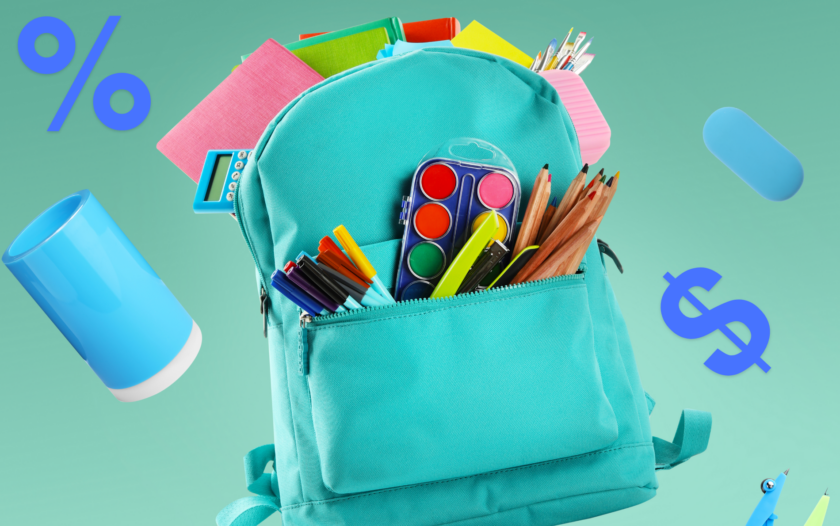Tax Deductible Secrets for Back-To-School Shopping
About Ashley
Ashley Jones is a freelance writer based in Houston, Texas and can be reached at ashleyaustin89@gmail.com. Her work has appeared across multiple platforms including Romper, Cancer Today, Publisher’s Weekly, Elite Daily, Mommy Poppins, Cancer Wellness Magazine, Motherfigure, Ladders News, and Let Grow.
Read full bio
The cost of raising a child in the U.S. is higher now than ever before. Back-to-school shopping, once a routine expense, is now a significant financial burden for many parents. Though the annual U.S. inflation rate has dropped to 3.2% as of July 2023, prices of everyday items are still higher than they were before the pandemic. This back-to-school shopping season, consumers are expected to spend an average of $890.07 per household, according to the National Retail Federation, topping 2022’s record-high of $864.35.
However, you can employ some savvy strategies to ease the financial strain and save money while shopping for your child’s school essentials. When it comes to the cost of caring for your kids, where you live matters, especially as back-to-school season rolls in; how much you spend on school supplies, new clothes, and everything else can vary from state to state depending on how much sales tax is due — if at alTaxesxes play a crucial role in saving money on back-to-school shopping expenses. Between tax deductions and tax-free shopping days, several opportunities exist to save money during the back-to-school shopping season.
$136 billion
Is the NRF's (National Retail Federation) latest data prediction for the combined amount spending on back-to-school and college for 2023.


Take advantage of tax-free shopping
Only five states do not impose a statewide sales tax: Alaska, Delaware, Montana, New Hampshire, and Oregon. If you’re fortunate enough to live in one of these states, you enjoy a sales-tax-free environment year-round. For residents of other states, sales tax can add a significant amount to back-to-school purchases.
One tried and true way to save while shopping for back-to-school is to shop during sales tax holidays. During these special weekends, certain items are exempt from sales tax, allowing you to save a considerable amount on your purchases. These savings can make a substantial difference, especially if you’re buying multiple items for multiple children or are investing in new electronics.
The Federation of Tax Administrators publishes an annual guide to state sales tax holidays so you can see exactly when to save in your state as well as which items qualify. Tax-free weekends vary by state and typically cover items like clothing, school supplies, and sometimes even electronics. If you’re an online shopper, many retailers — Amazon included — will honor your state’s tax-free savings.
State tax deductions can offset education-related expenses
Certain states offer additional tax benefits to help alleviate the costs of education-related expenses. During the back-to-school season, these tax deduction benefits can help relieve the spending burden for parents. Some states offer extra tax credits (to decrease the overall tax liability) or deductions (to lower an individual’s total taxable income) as a way to support consumers in managing the financial challenges associated with back-to-school expenses.
For example, parents and caregivers in Minnesota can claim the K-12 Education Credit and the K-12 Education Subtraction when they file their taxes. A report by The Globe noted that in 2022, “more than 17,000 families received the K-12 Education Credit for an average credit of $280. Over 134,000 families received the K-12 Education Subtraction for an average subtraction of $1,266.”
The following nine states offer similar benefits:
- Alabama
- Illinois
- Indiana
- Iowa
- Louisiana
- Minnesota
- Ohio
- South Carolina
- Wisconsin
These tax benefits can substantially reduce tax liability for parents, potentially resulting in a larger tax refund and an influx of cash during the spring. Since tax filing and deduction requirements vary by state, be sure to familiarize yourself with your state’s specific tax incentives and requirements.
Maximize your back-to-school savings
Using a credit card with a solid rewards program can significantly enhance your savings during back-to-school shopping. Some credit cards offer generous cashback or rewards bonuses for specific purchases, including items your kids need to head back to school. If you plan to make substantial purchases, consider using a credit card with a sign-up bonus. By reaching the minimum spending threshold, you can unlock attractive rewards that further reduce the overall cost of your purchases.
If you’re weary about opening a new credit card just to reap the sign-on bonus after your back-to-school shopping is complete, Credello’s credit card debt consolidation tool may help put your mind at ease. Consolidating your credit card debt using the products this tool recommends can help you pay down debt faster and save money on interest.
Unused gift cards can also be a hidden source of savings. Nearly half of U.S. adults possess at least one unused gift card, according to a report from Bankrate, so chances are, you may have one to use tucked away in your wallet or a long-forgotten birthday card. Before embarking on your back-to-school shopping spree, grab any forgotten gift cards that can be used to offset your expenses.
Bottom line
As the new school year approaches, being strategic with your back-to-school shopping is essential to saving money. Timing your back-to-school purchases to align with tax holidays and taking advantage of available tax deductions in your state, you can maximize your savings and stretch your budget further. With careful planning, you can provide your children with all the essentials they need for school without breaking the bank.









